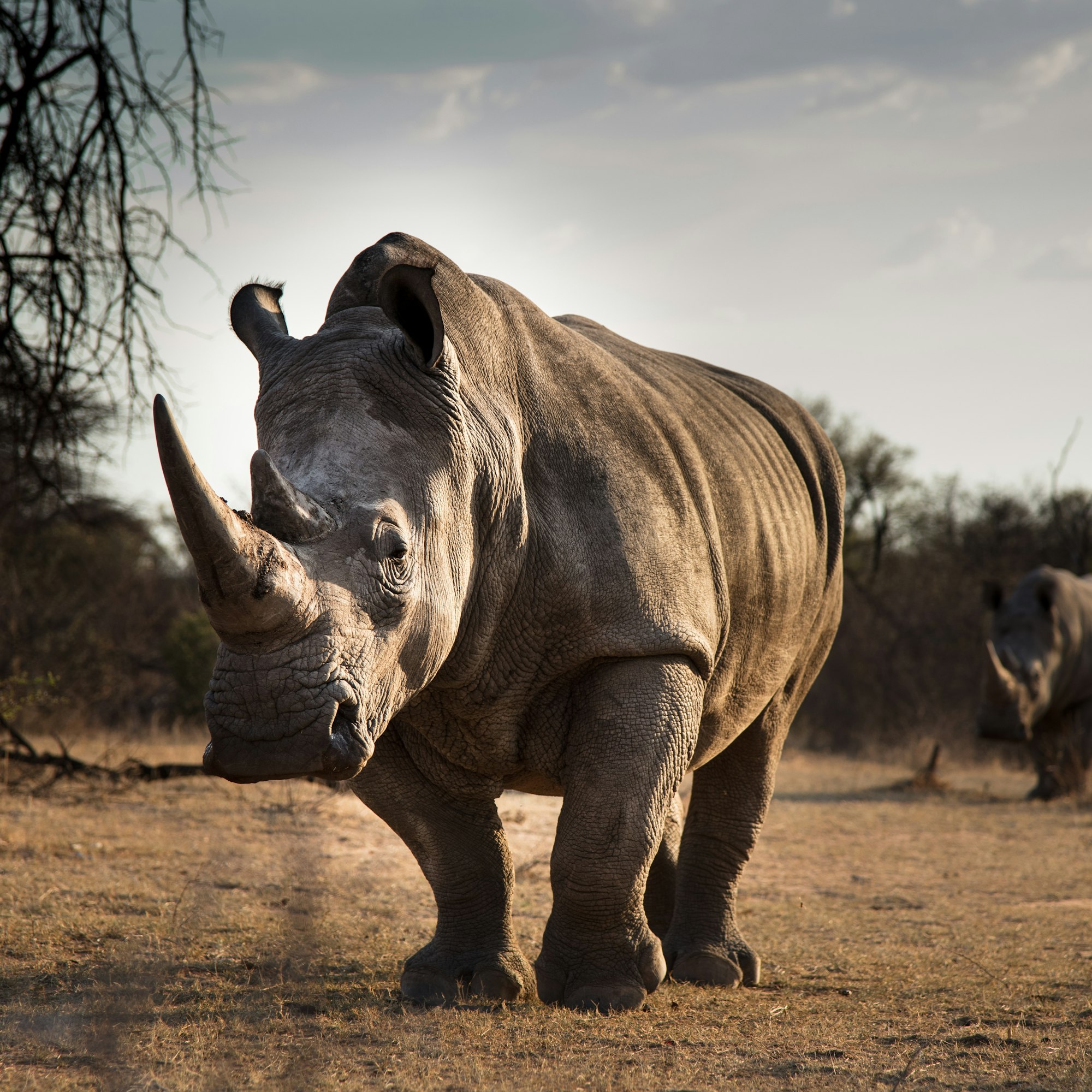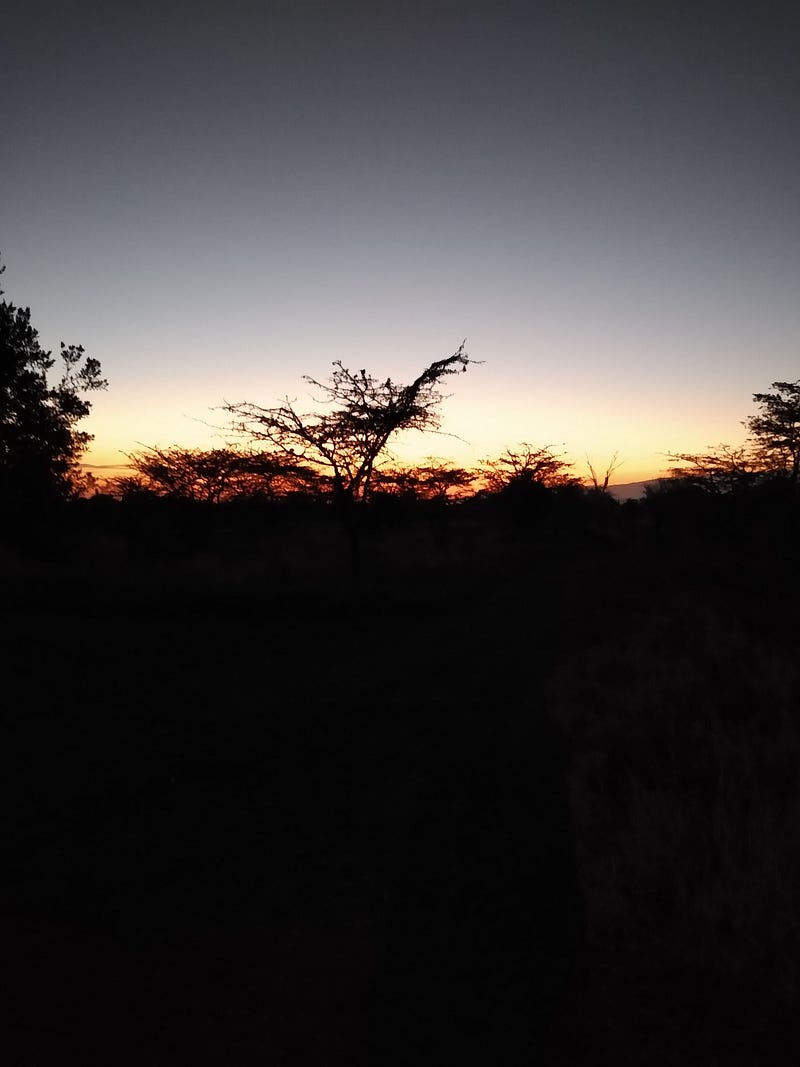
How one conservatory is working to save the great mammals of Africa
Emmanuel drove the Rover carefully along the slippery, muddy road. As we crossed the Zebra plain, we could see a small herd off to the left. The winter skies, as they had before, had unleashed a solid torrent of rain, the water a welcome respite to long months without. Our small group peered out through the windows on either side. To our right, Cape Buffalo, and one or two rhino.
Up ahead, a single acacia tree, decorated, as they so often are, with a mass of tightly-woven weaver bird nests.
It was the end of my first full day in Ol Pejeta, a 90k acre nature conservancy north of Nairobi and at the foot of magnificent Mt. Kenya. Here we would honor the dead, and commit ourselves even more deeply to the living. Those that are left.
Our small group, made up of several Americans, an Austrian and an ex-pat Yank living in Colombia, South America, had spent the day tracking and counting rhino. We’d had superb luck, seeing some fourteen of them, as well as a tiny baby barely a year old, and cute as the proverbial button. We’d also been treated to a short, but slow, magnificent parade of three huge elephants who passed within just a few feet of our vehicle, allowing us not only to see them up close but also to get the kinds of photos professional naturalists dream about. It had been some other kind of day for all of us.
But it wasn’t over yet.
Emmanuel pulled to a stop, just far enough out of the puddles for us to avoid landing in them.
This tree marks the cemetery of fallen animals, whose lives were lost to poachers, mainly, or to other causes. But mostly poachers. Each animal’s passing is acknowledged with a solid rock cairn an a sign indicated how they died.
As we walked along the line of markers, each with its own placque, we were reminded of the cost of greed.
A rhino, shot with a poisoned arrow, found writhing in pain, her horns removed while she was still alive.
Another rhino, shot and her horns removed, who died later of her wounds.
Each cairn in the back two rows spoke to an unspeakable death, hours spent in agony, as body parts were ripped from them while still alive.
The cruelty is unspeakable.
I could go on.
Hundreds of thousands of dollars’ in poachers fees, resulting in the loss of precious lives of an animal that is all too quickly succumbing to the greed of people who honestly believe that powdered rhino horn will magically increase their sexual prowess. Not only is that not in the least bit true, the corruption that infects too many African governments leads to wanton poaching and loss in too many countries where national parks were created to protect these very creatures. The lure of the money is too great, and government employees trade the world’s last rhinos for dollars, cars, houses and the passing fancies of human lives even as these great animals threaten to pass into memory.
While we were deeply saddened by the massacre, this small cemetery along the road in Ol Pejeta is witness to wonderful news.
For while there have been more recent deaths, they are no longer from poaching. At least not here at Ol Pejeta.
Simon, our guide that morning, took us for a two-hour hike to count, report on and number the rhinos. I walked next to him asking question. I’d done this hike last year and was concerned that Covid might have resulted in an uptick in poaching deaths.
“No,” he told me, smiling. “No deaths from poaching.”
Simon was proud. He had reason to be. Even with Covid, quarantine and the challenge posed by the loss of tourist income, Ol Pejeta hasn’t lost a precious animal to a poacher for four years.
A hundred thousand for a rhino horn is an unimaginable incentive for someone whose income might be less than one or two dollars a day. The vast size of Ol Pejeta alone makes the access to these creatures feel easy, but it’s not. Ol Pejeta has a highly -trained cadre of rangers, an anti-poaching team using tracking dogs, and a dedicated community of people who benefit directly from Ol Pejeta. Those people let Ol Pejeta know if a stranger shows up in town, likely to be a poacher. That kind of early warning system has proven to be highly effective.
Tourism brings in money, that money helps pay for animal husbandry and breeding program that benefit the locals along with a vast range of crop and education programs, all of which directly benefit the communities which border Ol Pejeta.
If Ol Pejeta prospers, so do they. Every single rhino lost is a direct loss to the communities.
That kind of trust and cooperation has taken years to build, but it’s paying off.
The most recent markers tell the story: the death are of natural causes. The acknowledgments to these animals speak to the love their caretakers bear them:
“A rhino like no other.”
Indeed.
Emmanuel had, just a while before, taken us to see Baraka, a blind rhino of sweet disposition, who had patiently allowed us to feed him, tickle his chin, play with his mouth and rub his scarred ears.
You cannot walk away from such an experience with any kind of tolerance for murder.
Nor does the Kenyan government. Poacher can be shot on sight, said Emmanuel. If they survive, they face steep charges. However, it’s best that they die on the spot, he said, for the money is too great a temptation. They will be back at it again in no time, and the small but growing population is too delicate to withstand another set of losses.
The other good news is that the rhino population, which is made up of both black and white rhinos, continuing to grow. Enough so that Ol Pejeta has secured another twenty thousand acres of land to allow them to graze and wander.
That means more room for rhinos, but at the same time it’s more land to patrol, protect and to ward off ever more determined poachers.
The four of us photographed the memorial and stood quietly under the dripping acacia to honor the dead.
And on the way back to our accommodations, we were able to see the living, which continues to defy the terrible odds.
If you’re interested in supporting the work of Ol Pejeta, adopting or sponsoring a baby or kind Baraka, please visit Ol Pejeta Conservatory. You might be surprised at what you find. You might even be inspired to visit and get more involved. For even under Covid, the rhinos are protected.

And that is truly worth celebrating.
Comments powered by Talkyard.